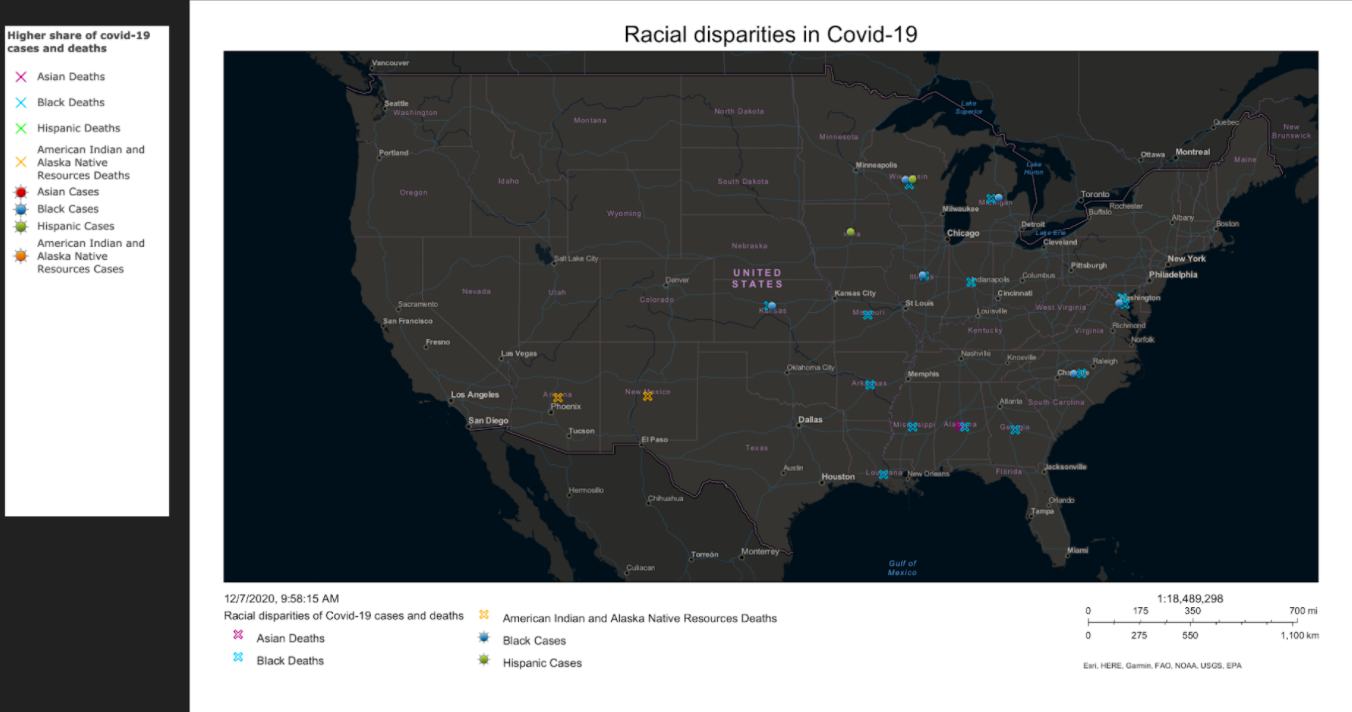Racial Disparities in COVID-19Racial Disparities in COVID-19
With the outbreak of Covid-19, immediate hot zones began to appear that correlated with lower socio-economic status, attuned to minority populations. It fueled anger and shock; however this is not the first time nor will it be the last that diseases continue to ravage such communities. For example, more than a century ago, the Spanish Flu also hit these disadvantage areas harder, yet we tend to forget this. In order to end this perpetual cycle, of certain groups being disproportionately hit in terms of morbidity and mortality, there needs to be recognition of areas that are at a disadvantage so that structural change can be made.
The map specifically demonstrates areas where minority populations have a higher share of covid-19 deaths and/or cases then their share of population. In Wisconsi. Black people made up a four-times higher share of confirmed cases (25% vs. 6%) and an over six-times higher share of deaths (39% vs. 6%). Similarly, in Kansas, Black people accounted for a three-times higher share of cases (17% vs. 6%) and an over five times higher share of deaths (33% vs. 6%) than their share of the total population. Other states where the share of deaths among Black people was at least twice as high as their share of the total population included Illinois, Michigan, Missouri, Arkansas and Indiana. The largest relative differences for Hispanics/Latinx was in Iowa (17% vs. 6%) and Wisconsin (12% vs. 7%). In Alabama, Asian people accounted for 4% of deaths compared to 1% of the total population. For American Indian and Alaskan Native, New Mexico (37% vs. 9%), and AIAN individuals make up five times more deaths compared to their share of the total population in Arizona (21% vs. 4%). While this data is specific to locations, this is a trend apparent all over the US.
However, it is important to note that less states report data for Asian and American Indian and Alaskan Native groups and there are discrepancies in how states report this data. Interestingly, this is very similar to how data on minority communities was neglected to be collected during the Spanish Flu.
I will explore the social reasons for why minorities continue to be disproportionately impacted by a disease like Covid-19 in modern day and relate it back to barriers present during the Spanish Flu.
